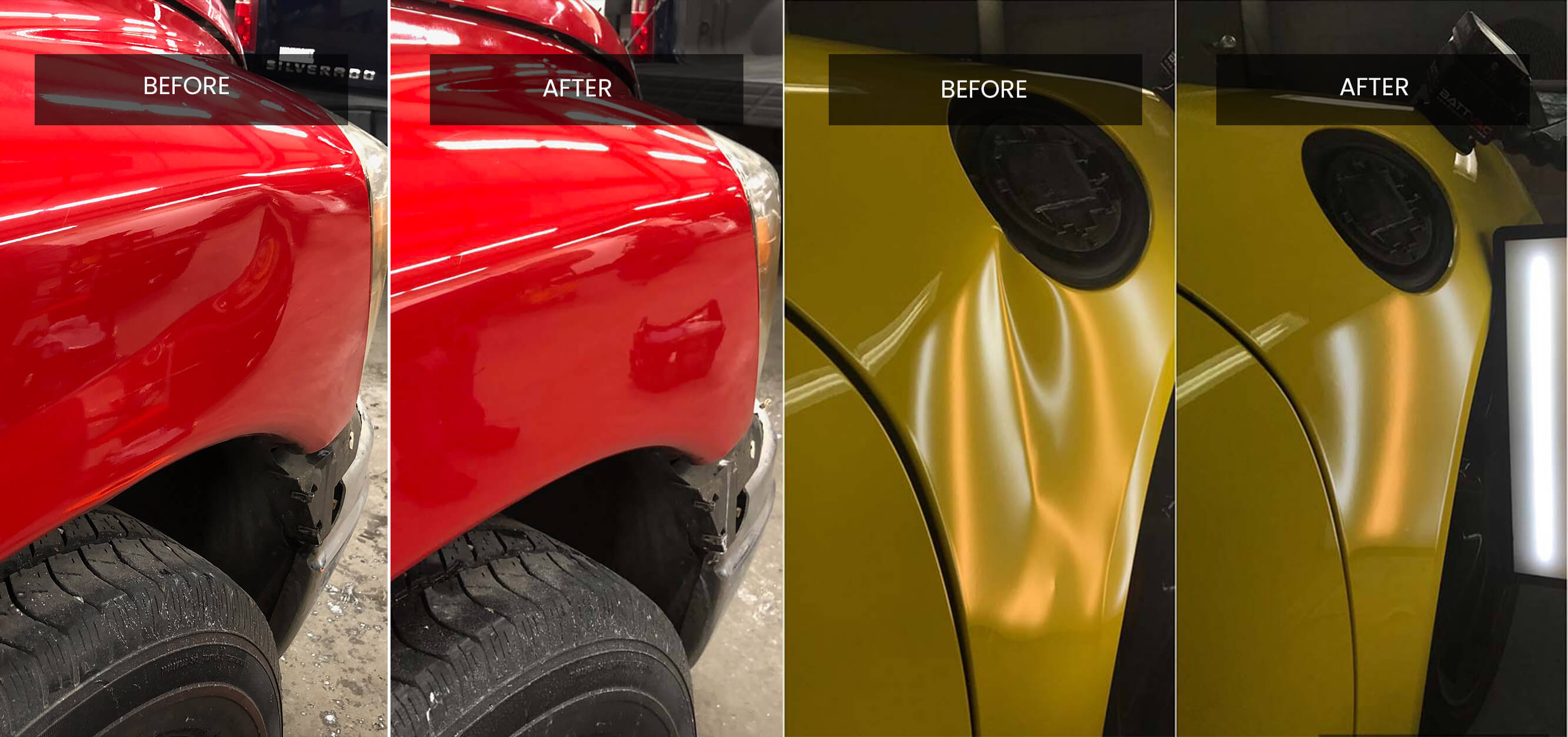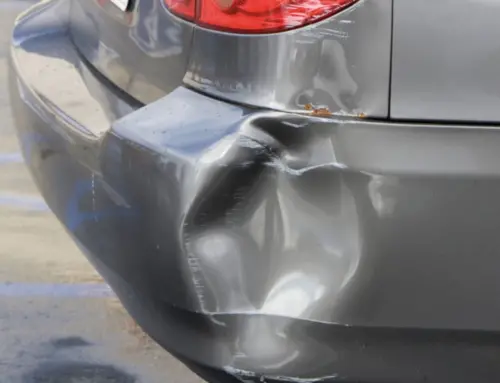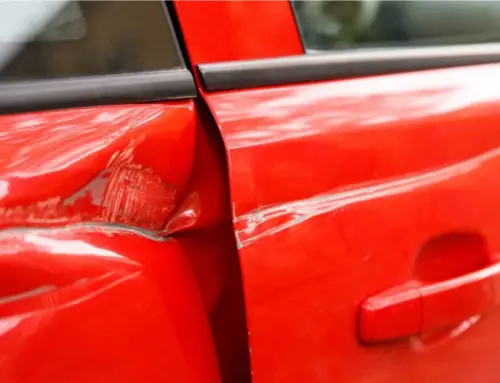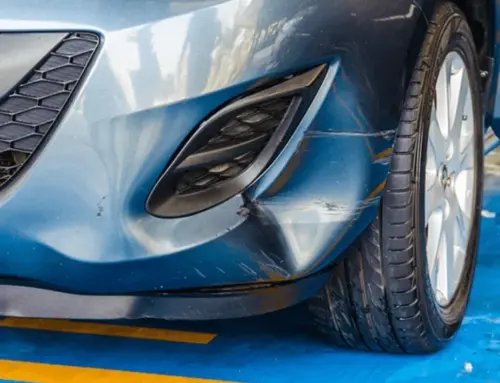If you’re like most people, you probably don’t think too much about the dents and dings on your car. But if those blemishes start to add up, they can really hurt the resale value of your vehicle. That’s where paintless dent repair comes in.
Paintless Dent Repair (PDR) is a specialized automotive repair technique that involves removing small dents, dings, and creases from cars without the use of traditional auto body repair methods such as sanding, filling, and repainting. PDR can be performed on both aluminum and steel panels and is often used to repair hail damage, door ding damage, minor creases, and other smaller blemishes.
PDR technicians use a variety of specialized tools to massage the dent from the inside of the panel, which gradually pops the dent out. In some cases, special glue tabs or plastic wedges may be used to help assist in the dent removal process. Once the dent has been removed, the technician will then use a variety of polishing techniques to blend the repair area with the rest of the panel.
Let’s take a look at the benefits of paintless dent repair and see if it’s the right choice for you.
Benefits of Paintless Dent Repair
1. Affordable
Paintless dent repair is a relatively affordable way to fix small dents and dings on a car. It is less expensive than traditional body shop repairs, and it can be completed more quickly. Paintless dent repair uses specialized tools to push and pull the metal back into place, so there is no need for painting or filling the damaged area. This also means that there is no risk of damaging the paint or making the dent worse. Cost savings can also be considered, as there is usually no need for expensive replacement parts or materials.
2. Fast Solution
Paintless dent repair is a much faster process than traditional dent repair methods. In most cases, the repairs can be completed in a few hours, rather than the days or weeks that are required for traditional methods. This means you’ll be back on the road sooner! Time savings can be significant because the car does not have to be taken in for a full-body paint job.
3. Eco-friendly
Traditional dent repair involves the use of chemicals and paints that can be harmful to both the environment and your health. PDR, on the other hand, doesn’t require the use of any harmful chemicals or pollutants. You also don’t need to generate any waste when you do PDR since there’s no sanding or painting involved. And since PDR can often be done without having to remove panels from the vehicle, it saves on energy and resources as well.
4. Preserves the Value of the Car
Paintless dent repair is the process of repairing dents and dings in cars without having to repaint the entire car. This is done by massaging the dent from the inside of the car’s panel so that the exterior paint remains intact. Paintless dent repair is beneficial because it leaves your car’s paint job looking new, which preserves the value of your vehicle.
5. Works Well With Modern Auto Paints
Newer vehicles have complex paint jobs that can be easily damaged by traditional repair methods. PDR preserves the integrity of your paint job while still erasing unwanted blemishes. PDR also preserves the factory finish on your car, which can be important if you plan to sell it or trade it in at some point.
6. Non-invasive
PDR is performed by using special tools to push and massage the dent until it pops out. There is no need for sanding, Bondo, or painting, which means there is little risk of damage to the vehicle’s finish. PDR is a popular choice for repairing minor dents and dings, and it can often be used to fix hail damage as well.
7. Perfect for Hail Damage
When your car is damaged in a hailstorm, the last thing you want to do is further damage the paint job by trying to repair it yourself or taking it to a body shop. Because PDR does not rely on any kind of invasive techniques, it can effectively remove dents and dings caused by hail without damaging the existing paint job. This makes PDR a great option if you want to avoid costly repainting expenses.
Is Your Car a Candidate for Paintless Dent Repair?
There are a few factors that you’ll need to consider when determining whether your car is a good candidate for paintless dent repair (PDR). The most important thing is the size and location of the dent. If the dent is large or located in a difficult-to-reach spot, PDR may not be possible. Additionally, if the paint around the dent is damaged or scratched, PDR may not be an option.
Another thing to consider is whether you want to keep your car’s original paint job. If you do, then PDR is probably a good choice since it won’t damage the paint. On the other hand, if you’re thinking about getting a new paint job anyway, then traditional dent repair methods may be a better option since they can sometimes provide a better finish.
There are several limitations to paintless dent repair (PDR), and it’s important to be aware of them before you decide whether or not this method is right for your needs. Keep in mind that PDR is not always the best option, and in some cases, it may not be possible to fix the problem with this method.
– Deep dents or dents with sharp creases
– Dents in which the metal has been stretched or torn
– Dents in which the paint has been damaged or cracked
– Dents that are too large for the PDR process to work effectively
– Dents located on very thin panels such as those found on some aluminum cars
– Dents located in hard-to-reach places such as behind-wheel wells or inside door panels
If you have a small dent or ding on your car that needs attention, be sure to give Piedmont Dent Repair a call. We offer quick, convenient service and use the latest techniques and equipment to get your car looking good as new. Contact us today to learn more about our services or schedule an appointment!






